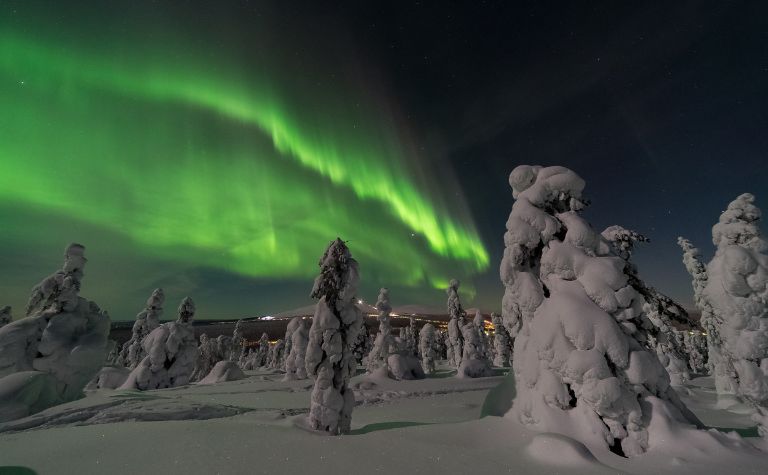Finland’s location – squeezed between Norway and Sweden on one side and Russia on the other – can confuse those unfamiliar with Finnish culture into thinking that the Finns must be either Scandinavian or Slavic.
They’d be surprised to learn they would be wrong on both counts.
Finns are neither Slavic nor Scandinavian. Apart from Swedish-Finns and Samis, most Finns are part of the Baltic-Finnic subset of the Finno-Ugric ethnic group, including Estonian, Karelian, Ludic, Vepsian, Ingrian, Livonian, and Votic peoples.
Ethnicity and race are usually far too complex to overlap with the clean outlines made by international borders, many of which are of very recent origin.
Exploring Finnish heritage can reveal just how intricate such questions can be.
Also, see Why Are Scandinavians Rich? to learn more.

What Race Are Finns?
Finns are usually listed as Caucasian. In the 19th century, they were clubbed with “Mongols” because of a significant Sami population.
However, it is essential to note that race today is primarily understood as a social construct and considered irrelevant as a biological category.
Finland has one of the most genetically similar populations of any nation in the world today.
Its geographical isolation has led to centuries of intermarriage and limited population exchange, resulting in a highly uniform gene pool. [1]
But, despite the relative homogeneity of the Finnish population, it is hard to lump all Finns together and place them in clumsy racial categories such as “White” or “Asian.”
There are at least three reasons why determining the outlines of a “Finnish” race is problematic.
The Complicated Genetic Makeup of the Finnish People
The genetic makeup of Finnish people is remarkably unique compared to many of their neighbors in other parts of Europe.
Besides the African genetic markers common to all humanity, the DNA of most modern Europeans also derives from three distinct waves of migration into the continent.
Although separated by thousands of years, all these ancestors are of European origin.
However, Finnish genetic markers also include a significant East Asian component. [2] This complex ancestry makes most Finns distinct from both European and Asian population groups.
Heterogeneity Among the Finnish Population
The uniformity of the Finnish population is only relative. That is, the genetic inheritance of all Finns is not entirely identical. For instance, the Finnish population includes significant sub-populations of at least three distinct ethnic groups:
- Finns
- Sami
- Swedish-Finns [3]
The Finns
The largest ethnic group of the country, the Finns, refer to themselves as Soumi.
Although there has been some cultural exchange between their populations over the centuries, the Soumi language and culture are distinct from those of their Scandinavian and Slavic neighbors.
Belonging to the Baltic-Finnic subset of the Finno-Ugric languages, the language of Soumi Finns can be traced to a group of people who first migrated into the areas surrounding the Baltic Sea 3,000 years ago.
Languages clubbed in the same group include those spoken by the Estonian, Karelian, Ludic, Vepsian, Ingrian, Livonian, and Votic peoples. [4]
Traditionally pagan farmers and fisherfolk, most Finns are Lutheran today.
The Finnish national epic, ‘Kalevala,’ is a product of their culture. They are the most dominant cultural group in the country today.
Sami
The Sami are migratory reindeer herders who have lived in parts of Finland, Norway, Sweden, and Russia for over 5,000 years.
Their East Asian ancestors were among the earliest settlers of Finland.
The language of the Sami is distinct from but a part of the larger Finno-Ugric language group that also includes the language of the Soumi Finns.
Over the years, the land available for Sami to graze their herds has been reduced. They are underrepresented in government and are considered a minority group.
Swedish-Finns
Sweden ruled Finland for much of the middle ages. During this time, many Swedes moved to Finland.
At the same time, many native Finns also adopted the Swedish language and the Lutheran faith to better integrate with those in power.
There was also some exchange of populations through intermarriage.
The descendants of these Finnish groups today make up a distinctly Swedish-Finn ethnic group. They live mainly along Finland’s western coast and still speak Swedish.
The Arbitrariness and Irrelevance of Race as a Scientific Category
Evolving views on race only further exacerbate the complications in assigning a racial identity to the Finnish people.
Increasingly, that race is seen as a social construct says more about the people doing the categorization than it conveys about the subjects of their study.
Biologically, the concept of race is akin to that of a subspecies. But different species of birds are biologically distinct in the way that humans of different races aren’t.
While human migrations over millennia and long-term continuous inhabitation of geographical areas by different groups of humans have produced genetically distinct populations over time, the concept of race confuses rather than clarifies the insights that might be gained by studying these variations.
Also, see Why Do Scandinavians Have Small Noses? to learn more.

Are Finns Considered Scandinavian?
Many people use terms like Scandinavian and Nordic interchangeably.
Because of the close historical, cultural, and economic ties between the countries that make up these groups, it is easy to think that both categories are identical. Strictly speaking, this is not the case. [5]
Finns are Nordic but not Scandinavian. Finland is one of five sovereign nations considered the ‘Nordic countries.’ The other four include Sweden, Norway, Denmark, and Iceland.
The Faroe Islands, Greenland, and the Finnish Åland Islands are also ‘Nordic.’ Not all of these are Scandinavian, though.
Scandinavia only includes Sweden, Denmark, and Norway.
Both groups have long historical and cultural ties. Today, they continue to cooperate closely and run similar political economies.
Hallmarks of the Scandinavian and Norse models include strong welfare states, highly progressive gender relations, and some of the best governance records, according to the UN Human Development Index.
It is also worth recalling that many of these national boundaries have only been recently drawn. For instance, Norway and Finland were long ruled by the Swedes.
Also, see Why Do Scandinavians Have Colorful Houses? to learn more.

Are Finns Descended From Vikings?
The term Viking originally referred to only those Norse people who joined raiding expeditions to plunder the wealth of other nations.
They were a subset of the Norse, mainly consisting of soldiers and sailors.
However, they may have included farmers, artisans, and even women and children on occasions when the Vikings set out to colonize other lands.
While they came from different parts of the Nordic world, Vikings were bound together by their common pagan culture, which set them apart from the rest of Europe, much of which was Christian at the time.
Some Finns may have Viking descendants. Evidence of Finnish Vikings is sparse compared to that of Vikings originating out of Sweden, Denmark, Norway, and even Iceland and the Faroe Islands.
However, there are scholars who insist that there were indeed Finnish Vikings.
For instance, Estonian archaeologist Marika Mägi thinks that the “Vikings could not have reached the modern Russian territory without passing through the Baltic shores.” [7]
According to her, Baltic-Finnic people would have participated in Viking activity. And since the term is defined by profession rather than ethnicity, these people should be considered Vikings too.
Conclusion
The Finns are primarily a Baltic-Finnic people and are neither Slavic nor Scandinavian.
Also, see How Are Scandinavians Viewed In Europe? to learn more.
References:
[1] Source
[2] Source
[3] Source
[4] Source
[5] Source
[6] Source
[7] Source
